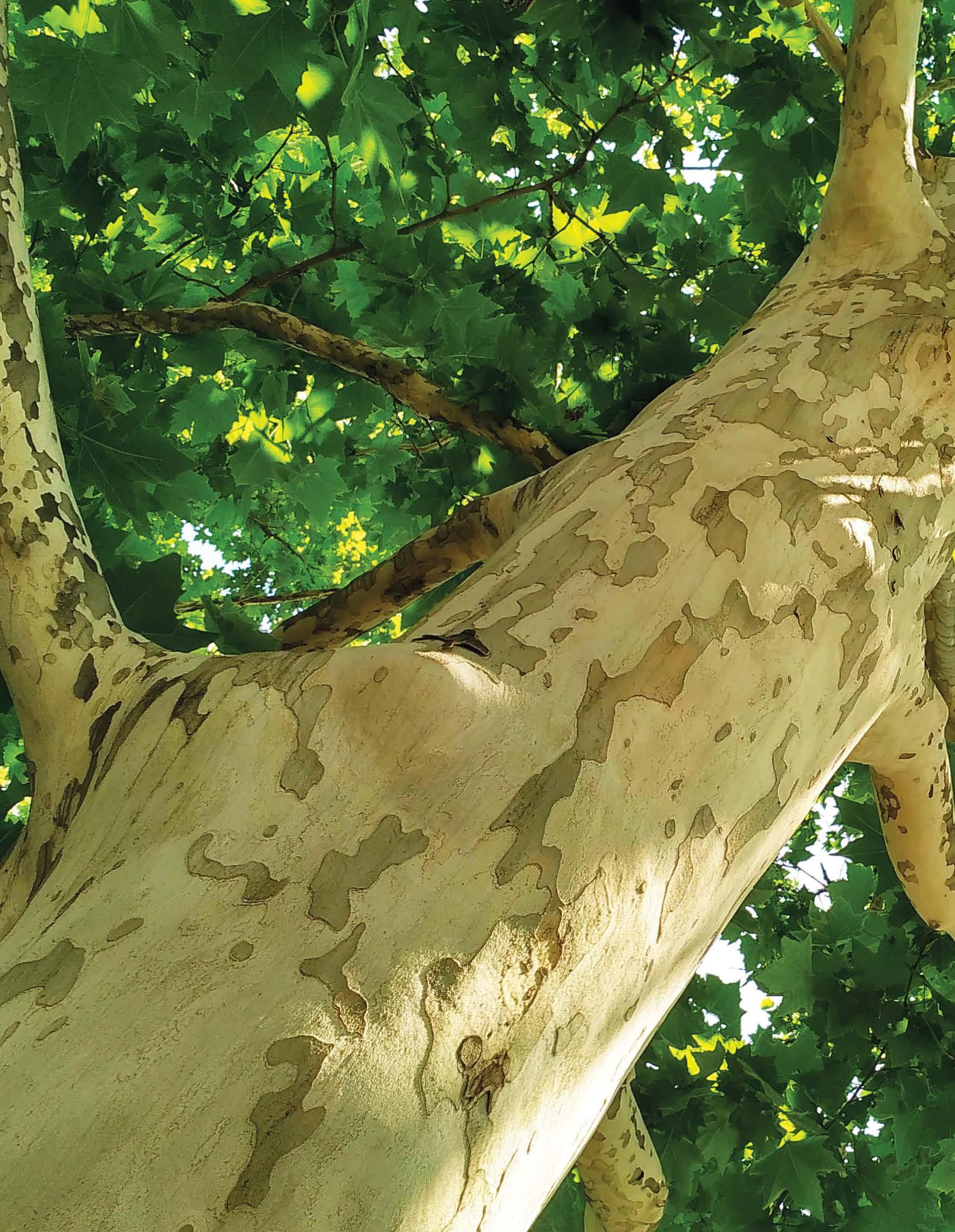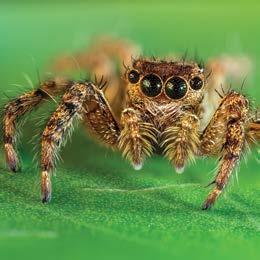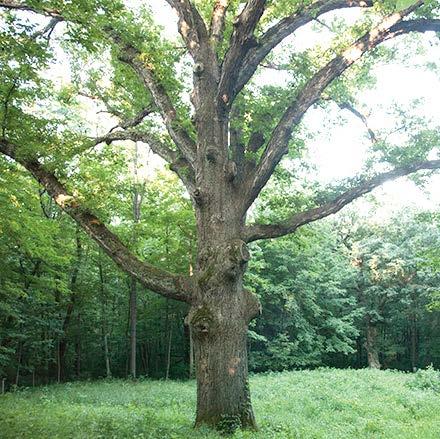
4 minute read
CONSERVATION
STATELY SYCAMORES
THESE ENORMOUS, EASILY IDENTIFIED TREES CAN BE SPOTTED IN ALMOST EVERY METROPARKS LOCATION.
Advertisement
The sycamore (Platanus occidentalis) is perhaps one of the most impressive native trees in Ohio. Its skyscraping, whitebarked limbs cast a stark contrast against blue skies and green foliage. Sometimes growing to be more than 100 feet tall and more than five feet in diameter, sycamores typically grow along streams and in rich bottomland forests.
The sycamore’s colorful bark is its most recognizable feature. Unlike the bark of most trees, sycamores’ bark doesn’t stretch as it grows. Instead, plate-like scales along its trunk fall off as the tree grows and leave behind pale yellow, white, grey or green patches on the trunk.
The sycamore’s large leaves make this an excellent shade tree. Finding the largest sycamore leaf on the ground is a great activity for kids. Green leaves are munched on by the caterpillar of tiger swallowtail butterflies, as well as about 37 other species of moths and butterflies, which in turn are excellent food sources for birds — making sycamores an important part of the food chain.
Sycamore trees tend to become hollow over time, which is caused by a fungus that rarely results in serious damage to the tree. Rather, wildlife often use these hollow trees for shelter. This is just one more reason sycamores are an important part of a healthy forest in Montgomery County!
Sycamore Trees in Your MetroParks:
• Find a shady sycamore tree to sit under and read a book: Eastwood MetroPark by the lagoon • Find the largest sycamores: Germantown MetroPark, orange trail, old forest • Find wildlife in a sycamore: Woodman Fen Conservation Area, boardwalk trail



GO ONLINE TO GET OUTDOORS
Visit MetroParks’ new Nature Is Open blog for stories and videos about other native flora and fauna you can find in your MetroParks, neighborhood and back yard. You’ll also find activities you and your family can safely do while you explore the outdoors and connect with nature this summer. Read more about the topics below at metroparks.org/natureisopen.
MILKWEED AND MONARCHS: THE IMPORTANCE OF PRAIRIES
Prairies were once common in Ohio but have been lost to development through the years. However, Five Rivers MetroParks has restored numerous prairies, often with volunteers and area partners. MetroParks now manages more than 800 acres of this important habitat, where you can see the amazing relationships between plants and pollinators. For example, milkweed is the only plant monarch caterpillars will eat because its milky sap keeps predators from eating them. And monarch butterfly populations have drastically declined, but they are an important pollinator to the food supply for wildlife — and humans. The Huffman Prairie State Natural Landmark is one of the largest prairie remnants in
Ohio, home to several rare plants, birds and insects. It’s also adjacent to the field where the Wright brothers once tested their planes, making a visit to this hidden gem an educational adventure about our region’s natural and cultural history.
FRIENDLY INSECT FRIENDS
Funny-faced, cute and harmless, jumping spiders are common and can be found near flowers. If you find one of these spiders and put a mirror in front of it, sometimes it will see itself and dance. Land crawdads use two pinchers to roll mud into little balls. They arrange these into a castle of mud balls around the top of their holes in the ground, where they live during the day. Fireflies are yet another common insect you can easily discover. Fireflies are actually beetles, and more than 20 kinds of fireflies live in Ohio. Each has its own pattern of flashing and lights that are more green or more yellow in color. Patty’s Shelter at Englewood MetroPark, the Woodman Fen Conservation Area and the Morning Glory Shelter at Germantown MetroPark are famous for their firefly shows.
WHY DANDELIONS ARE NOT WEEDS
Look closely at a dandelion’s leaves to discover why these super-useful plants are called “tooth of the lion.” These yellow beauties do not deserve their bad rap. Rather, the plants’ long roots feed grasses with nutrients from deep within soil, and pollinators use their flowers for food. Dandelions also have numerous medicinal qualities. You can even eat these plants and use them to make a plant bubble pipe!
ASHZILLA, BIG SISTER & OTHER GIGANTIC TREES
Many of the trees in the 16,000-plus acres of land Five Rivers MetroParks protects have been around much longer than the state of Ohio. And a mature, leafy tree produces as much oxygen in a season as 10 people inhale in a year. Trees also improve air quality by reducing heat and absorbing such pollutants as carbon monoxide, sulfur dioxide and nitrogen dioxide. Learn about some of
MetroParks’ biggest trees and where you can find them at metroparks.org/natureisopen.




